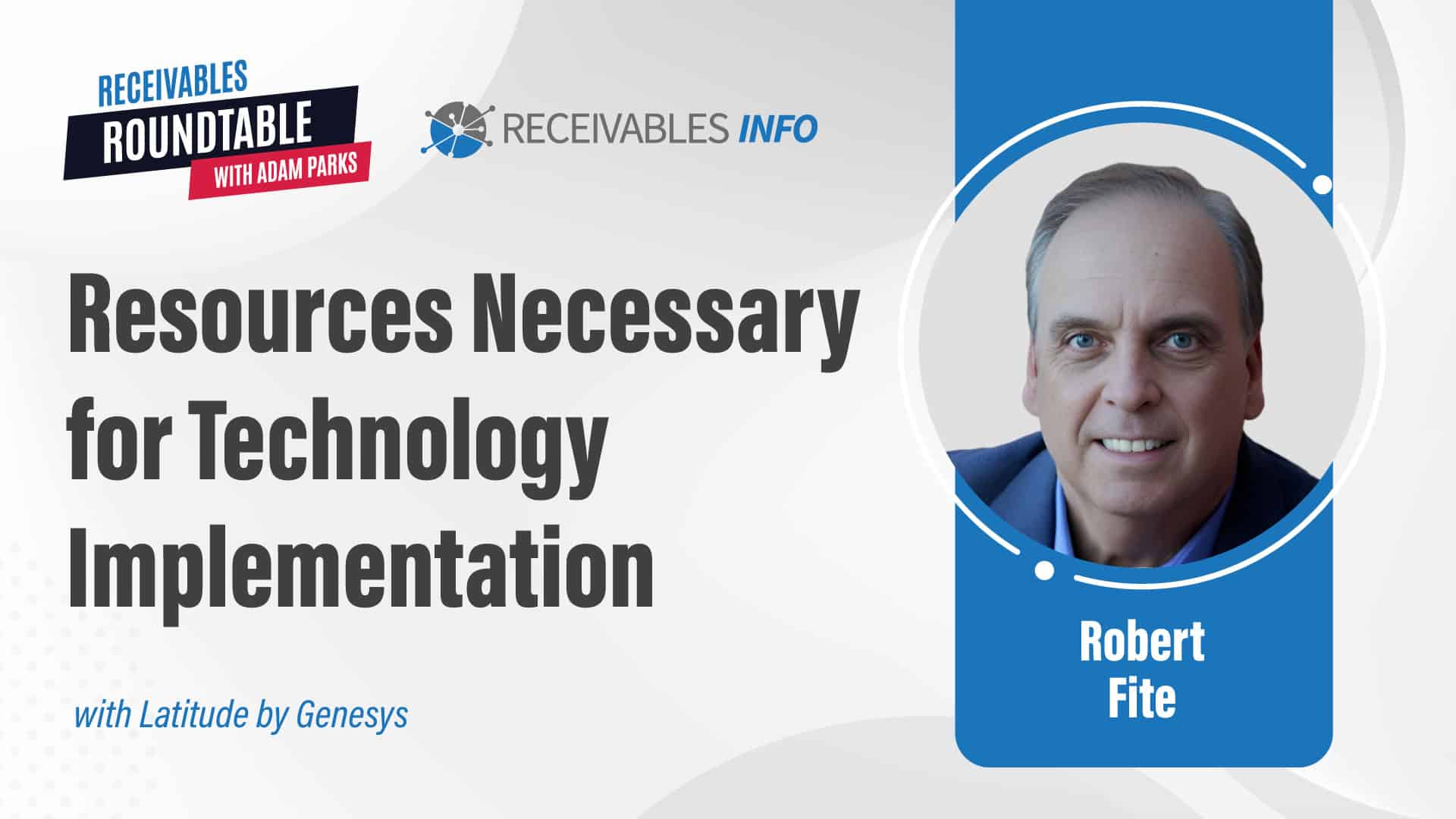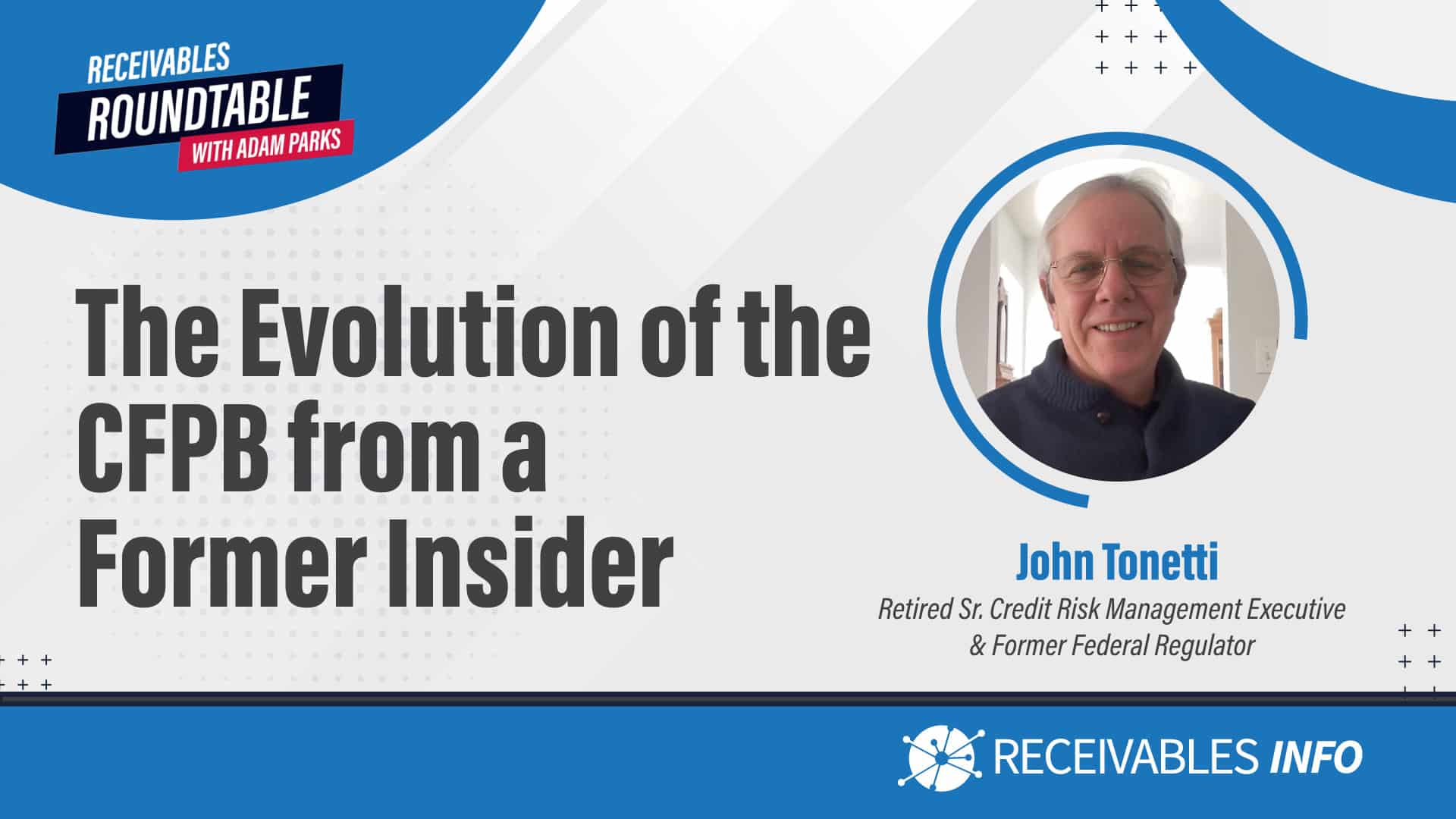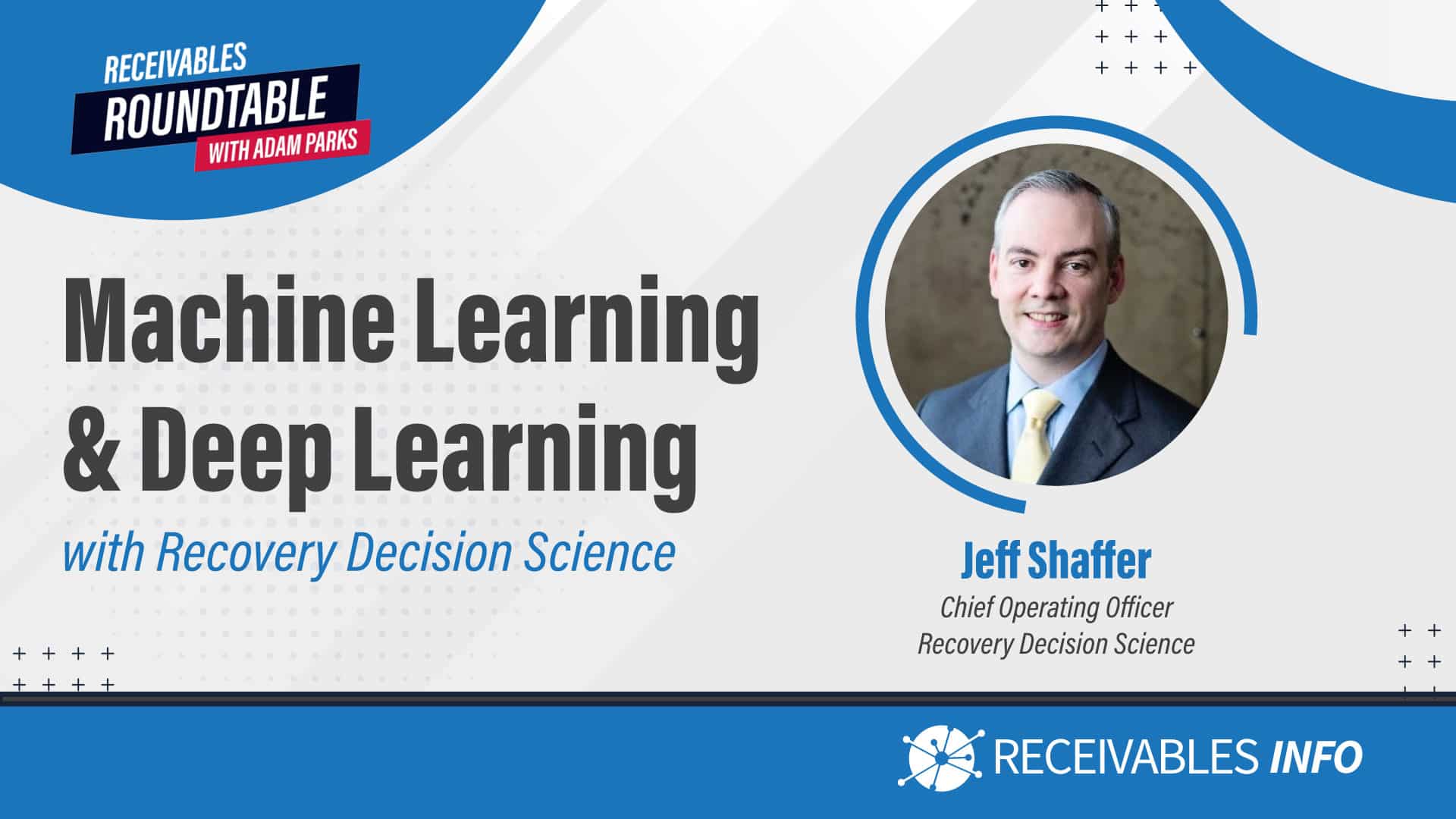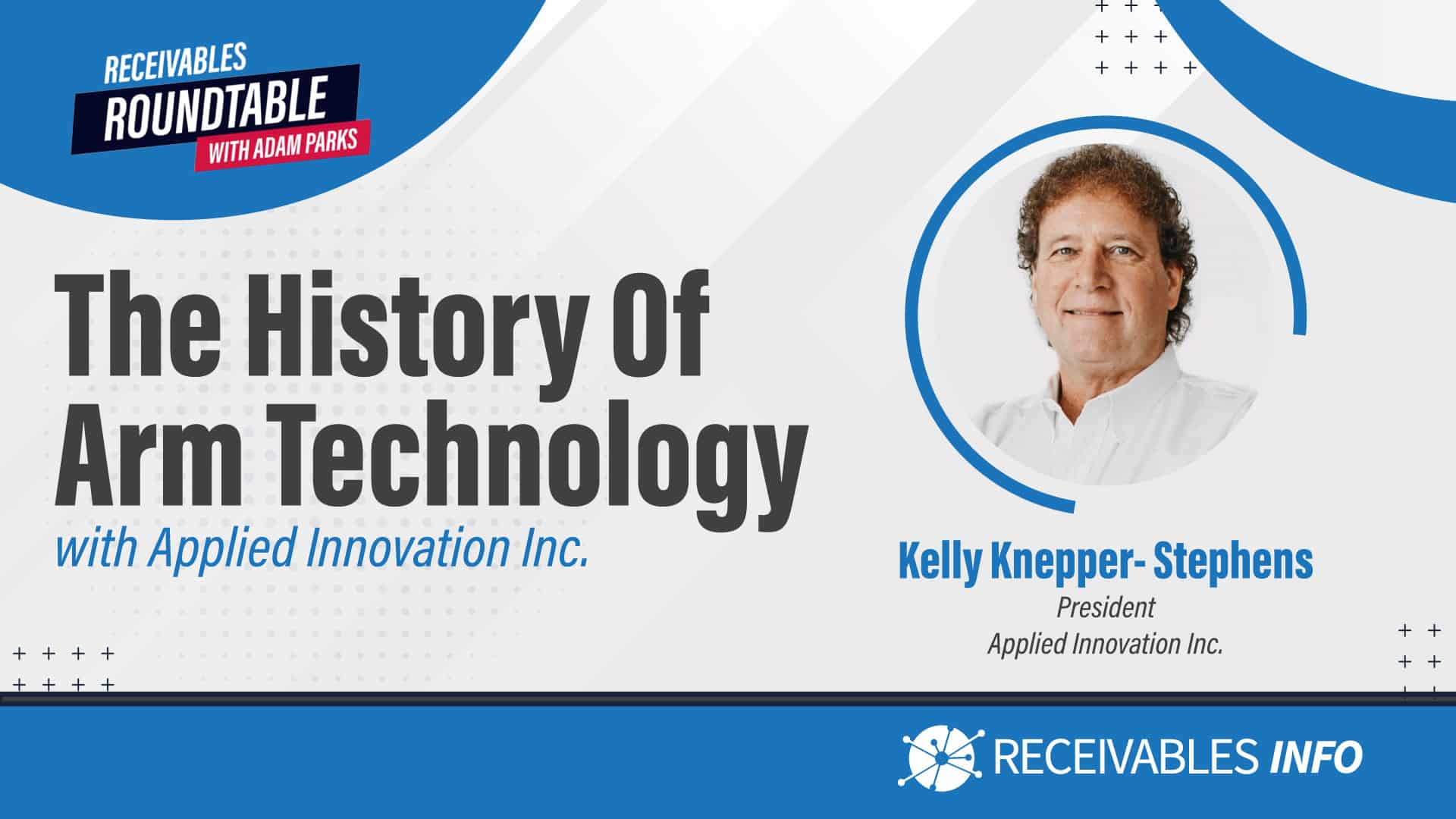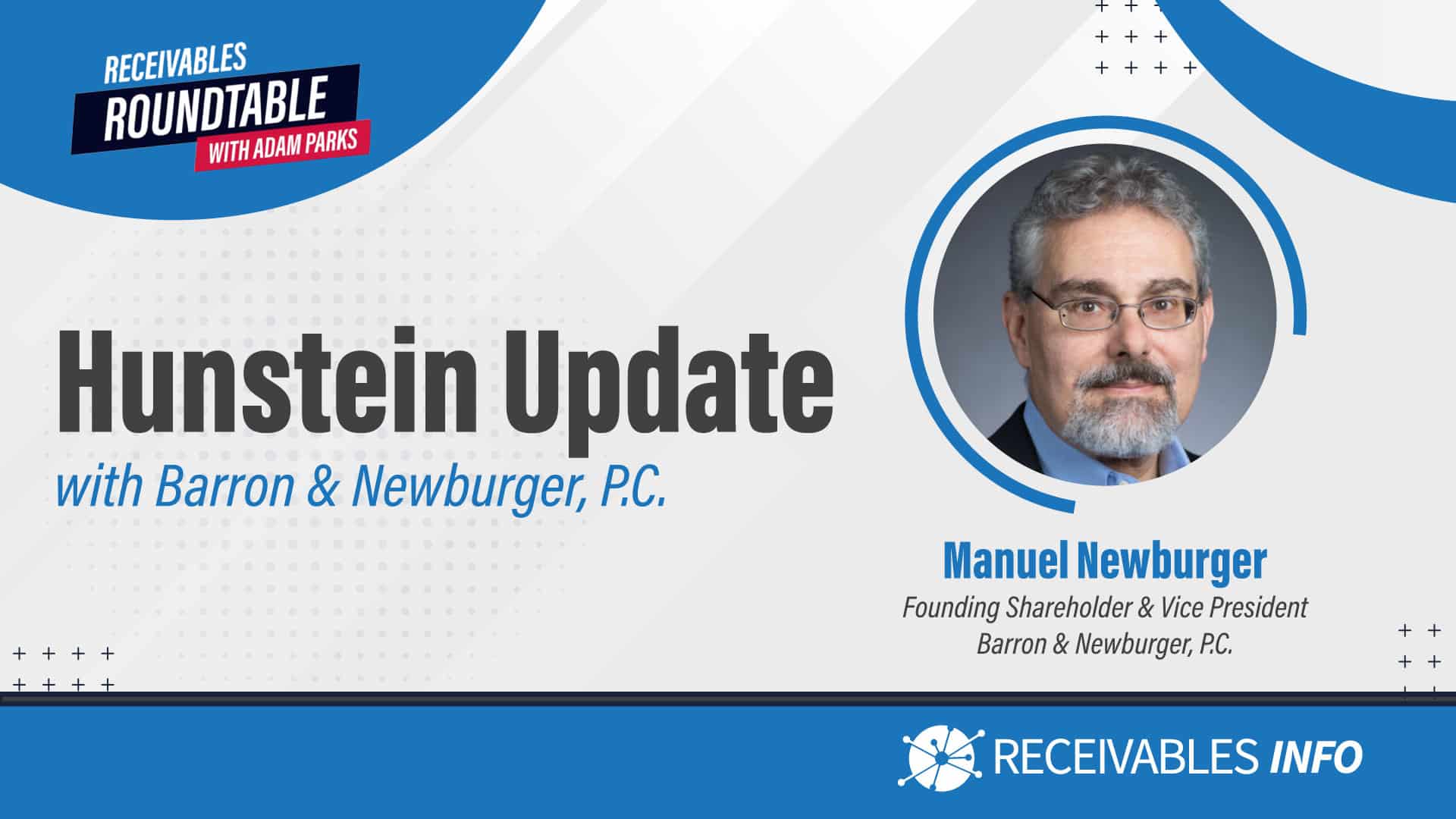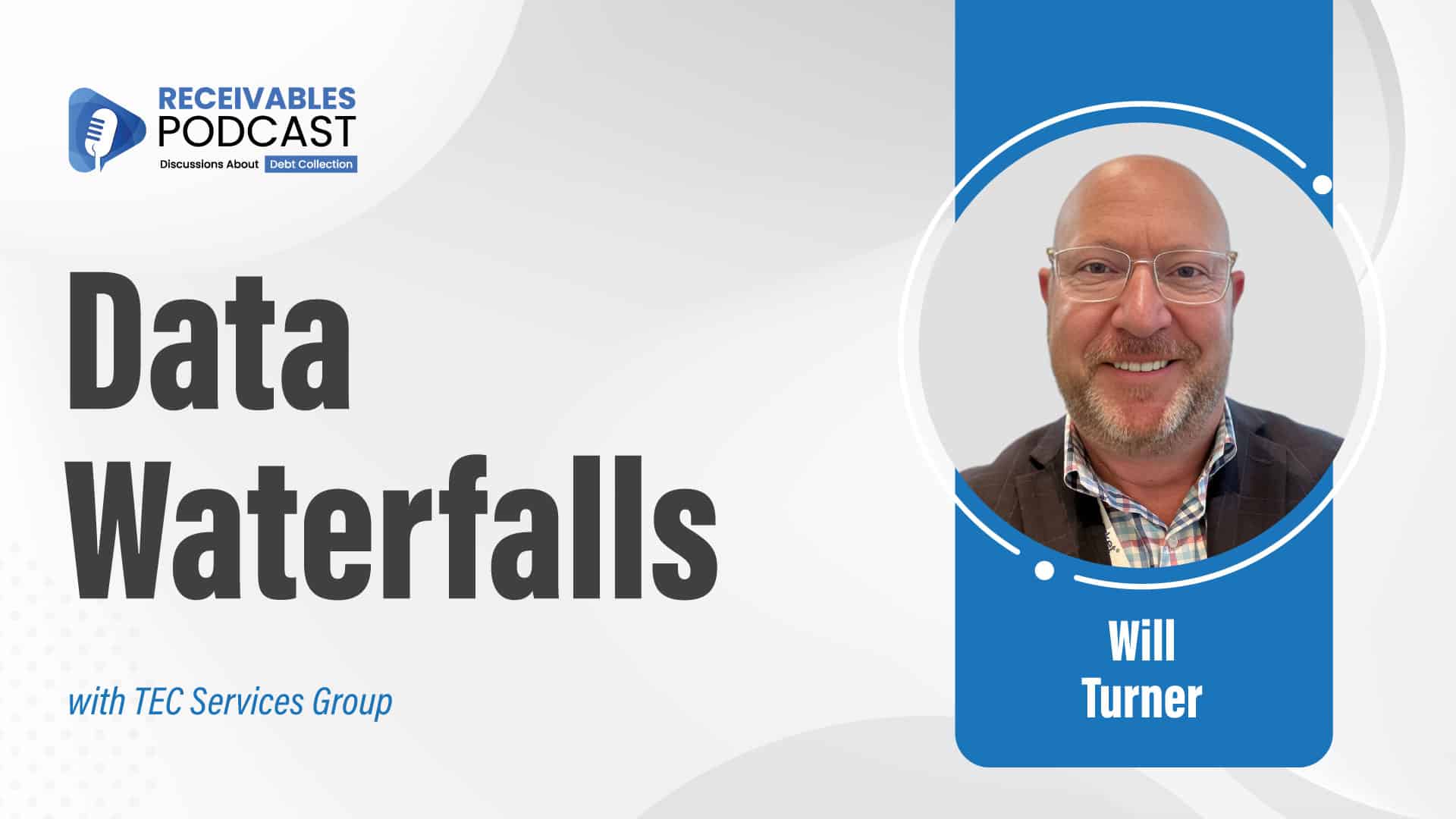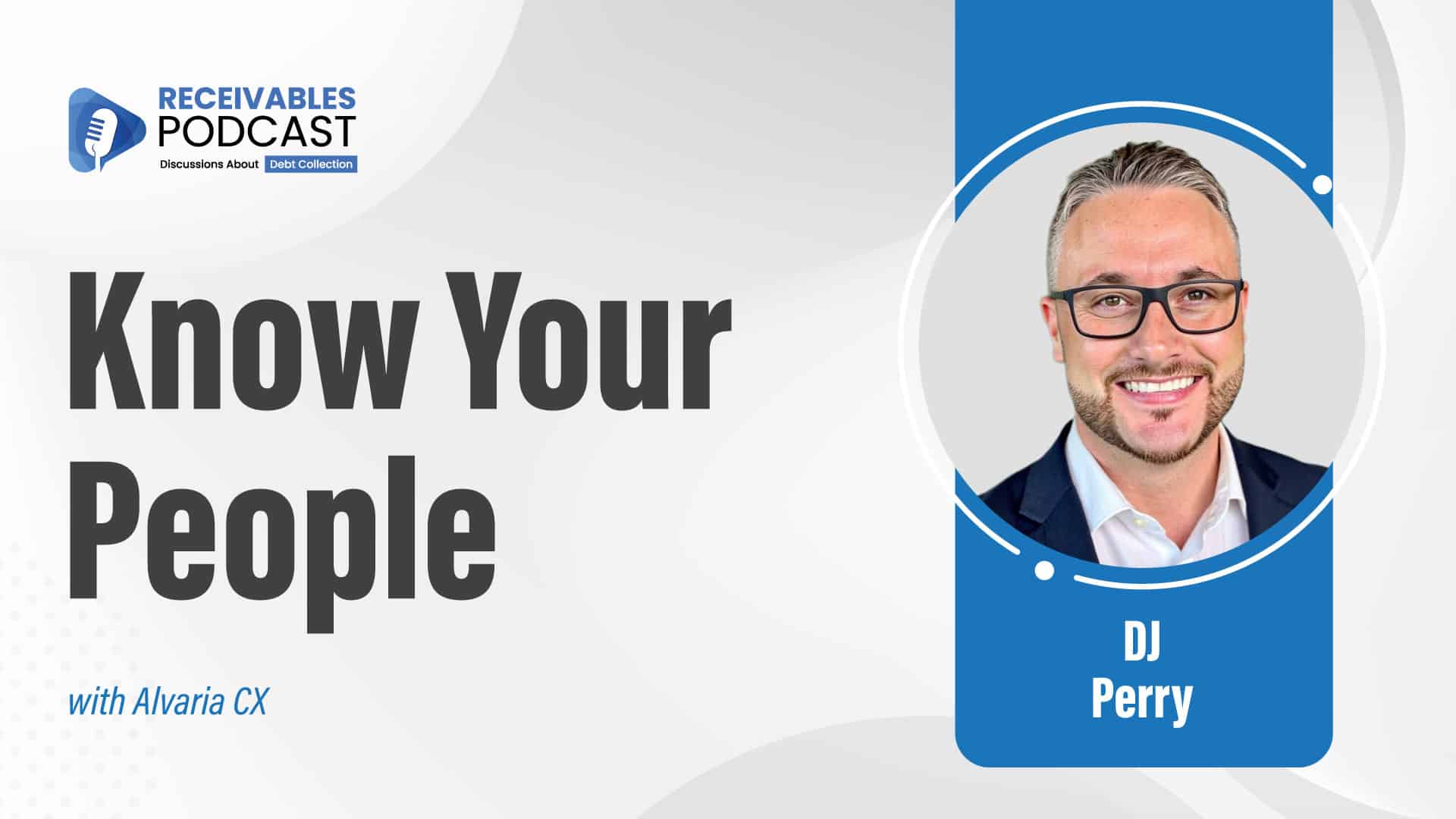Tune in for a chat with Robert Fite, Senior Sales Consultant at TEC Services Group with a focus on the Latitude by Genesys solution. Rob covers resources for new tech implementation, project scoping, support for initial configuration, managing costs, training, and more.
Listen to Your Favorite Podcasts
Adam (00:01.885)
Hello everybody, Adam Parks here with another episode of Receivables Roundtable. Today I'm here with my longtime friend, fellow tech nerd, Mr. Rob Fight, who spends his time with Latitude by Genesis and TEC Services Group. How you doing today, Rob?
Rob Fite (00:19.796)
Fantastic, Adam. Thanks for having me on today.
Adam (00:23.549)
Absolutely. Well, I greatly appreciate you very excited about our discussion today because I want to talk about the resources that are really necessary for a successful technology implementation. And I think it's an important topic that's often overlooked around our industry. But before we jump into that, Rob, for anyone who hasn't been as lucky as me to become your friend through the years, can you tell everyone a little bit about yourself and how you got to the seat that you're in today?
Rob Fite (00:51.028)
So when I was first born, I was very small. Then I, no, actually I've been in the business over 30 years, 30 years, in the business more mainly on the data analytics and technology side of collections software, work with, leading organizations through the years, such as fair Isaac Lexus, Nexus, and more recently TEC as a solutions consultant.
Adam (00:53.213)
you
Adam (00:58.141)
Fast forward, fast forward.
Rob Fite (01:19.54)
mainly helping clients in the industry get the right product in the right way so they can do business much better than they've done in the past.
Adam (01:27.729)
Excellent. So now that you're spending your time with TEC Services Group, could you tell everyone a little bit about that company and what it is that you guys do there?
Rob Fite (01:36.66)
Well, they got their start in the business helping organizations with integration, setting up their solutions, taking them to the next level, helping them optimize the technology, regardless of what kind of collections platform it is or the applications they want plugged into it. And so they've expanded that today where they represent and market a number of solutions, including Latitude, but a number of other systems and applications that all come together to make up clients.
what I would call their ecosystem today. And what we do is help them fit all those pieces together and make them work the manner they need to drive their business in today's arena.
Adam (02:18.045)
So technology implementations, sounds like this conversation is right up your alley. And as we were preparing for this one, I know you got me a little extra spicy on this one because I am always frustrated by the lack of resources deployed into a new technology purchaser implementation and deployment. So I'm gonna maintain my cool. But Rob, let's talk a little bit about it, right? Because I've never come across an organization, not just within the receivables management space, but anywhere ever.
I've never come across an IT team who said, I have enough resources for the next project, right? And so it's been one of the challenges of my career, trying to help an organization, let's say launch a new piece of software without deploying the appropriate support mechanisms underneath it, right? Making sure that you've got all the pieces and parts for a good configuration.
because it's one thing to buy a new piece of software, it's another thing to configure it, it's another thing to actually start to use it. And even those plug and play, the most plug and play systems that are out there still require some configuration. Let's talk a little bit about, you know, what kind of measuring out the types of resources that you might need for a new technology implementation.
Rob Fite (03:36.614)
Yeah. So first and foremost, the types that you would find is usually on the vendor side of it. What are the consultants? What, you know, not only the ones that would advise you how to configure and set up and those that are actually going to do that work, right. And those are no brainer and the clients or the collection agencies and like usually focus on that. And what they do is lose sight of the focus of the other critical resource. And that is on the own client side. Do you have.
Rob Fite (04:06.292)
the resources, not just an IT people that have the technical expertise, but also the subjects matter expert who knows the infrastructure, knows how they do business and want to do business. And, you know, are they available? Usually those people have day jobs and so they really aren't available. And so that's where things start to fall apart. And Adam, I'm hoping I'm kind of cranking you up a little bit. I'm turning up the heat a little bit. We'll see how soon you boil.
Adam (04:32.061)
It's the timing of these things that I think become frustrating because you go out, you spend say a million dollars buying a new software technology package and without the expectation that you're going to spend some money in the deployment process, right? Because everything is a function of cost and time. Everything is a function of cost and time. And how much are you willing to spend and how quickly do you want to get these things done are going to be in direct correlation.
but where are you going to get those resources? Because when you talk about lending the expertise to the process of deploying a new piece of technology, well, you need the expertise from that software's perspective, right? Someone who has a deep understanding of the new tool and its capabilities and how to accomplish those things on it. And at the same time, you need those subject matter experts, not only to be lending their expertise, but to be learning the features functions.
and pieces and parts of the technology that they're gonna have to use on a day -to -day basis. For me to scope all those things out or to understand all of that requires project scoping upfront. And I find that, and that's probably where my frustration comes from, is I find that most organizations really don't wanna take the time and attention to appropriately scope.
a new project before they start undertaking it. They look at the cost of the software, they say, I'm gonna buy it, my IT team will take care of the rest, they'll be able to deploy it, and then you end up with a three or four year deployment, right? Because nothing is on the right track.
Rob Fite (06:01.236)
If it doesn't fall apart before you ever kick it off Yeah, yeah, so that that other resource the other the third leg of the stool if you will is we say research financial resource Because that goes back to the first one. I want this system I want this but I really don't want to pay what it really takes to set it up in the manner that it truly needs to be set up More now today than ever before
Adam (06:05.245)
Exactly.
Rob Fite (06:29.076)
that level of integration, configuration, and testing, and all that to get to allow them to go to the next level of collections. They just don't understand or can't comprehend that there is a financial commitment to that, whether it be in obtaining more resources than you employees or consultants to help do the job or a combination thereof. And if you don't and you way underestimate that,
Adam (06:50.493)
Rob Fite (06:57.332)
or you assume that it's going to be only X amount of dollars because that's all you really want to pay, then you're going to be in trouble.
Adam (07:08.157)
I always try to look at it as a percentage, right? So to me, the cost of deploying a piece of technology is generally gonna be 30 to 40 % of the cost of the technology itself. And that's, again, I'm ballparking that because I'm not talking about a specific piece of technology, dialer versus system or record versus, you know, compliance management system or whatever pieces and parts you may have within your application stack. But I think the challenge here is,
taking a step back, scoping out the entire thing and saying, what do I need in terms of cashflow for this, right? I should probably expect a 30 to 40 % increase on the cost of the software in terms of that support, right? The support that I need for that appropriate initial configuration.
Rob Fite (07:49.46)
No, you're spot on. Yep, you're spot on. And your ballpark is pretty good. So I do think that what you find is that I'm working with a client right now, a prospect that we spent probably six months. This is just discussing and semi -scoping out the work. Six months.
Adam (07:57.405)
My first rodeo.
Rob Fite (08:16.692)
demos, here's what I need, this is what I need, here's how I need it, what about this, do we have the resources, what kind for this? And they're really flipping over every rock to understand, well, I need it for payment processing, what do I need for the data, what do I need for reporting, what I need for configuration and integration, migration on and on testing, and do I have enough, and what do we really think that's going to be, and how much time on that. And you know, is it painful? Yes, to a certain degree, but there'll be no surprises.
Rob Fite (08:46.599)
when the project starts. When they get going, they'll know and like you have told me earlier, you'll be within 10 % plus or minus at the end, but that's the way it should be. Otherwise, if you go in with a lot of assumptions and that, it'll all work its way out and that's it, you're going to be in a world of hurt where you're going to be opening up a wallet that you didn't expect to open up because you made a lot of incorrect assumptions.
Adam (09:12.765)
Well, the divergence on the cost of the software, right? So they would say if you appropriately scope it, you should have an expectation of roughly a 10 % plus or minus in terms of your cost, right? If you don't scope it out, you're going to have a 50 % plus or minus in terms of what it's going to cost you, right? So you're still, you're going to end up spending more money, more frustration if you don't appropriately scope a project on day one, right? Otherwise you can, and how well, if you don't appropriately scope it, how do you get everybody rowing in the same direction?
Rob Fite (09:41.972)
That's it. If you don't know, don't go. So let's stop and figure it all out. And that's where people fall apart. That's where these projects get implemented. And you look back on it two years later and somebody's asking the question, why did we do that? It's because they went ahead and said, we didn't scope this out, so we had to just do this. And you settled for less configuration, less functionality.
leverage, if you will, and you didn't really get to where you wanted to with that new system.
Adam (10:19.709)
You never get the chance to really use the product to its fullest potential. And even having that guidance of what are you using today, what are you looking to use, and how do those things cross over? Because no matter what the technology is, beyond even the implementation, it's going to be a training process of getting all of your people up to speed. And what's that timeline going to look like? Are you going to have to run concurrent systems for a period of time to ensure that you don't drop any balls?
Rob Fite (10:49.364)
Yeah, yeah, we get clients, well, just send me over the YouTube clips. OK, sure. I mean, I get the concept, but it used to be maybe you could do that. But the world today, in some ways it's simplified. But today, because of the level, the features and functions now are so rich, it's like an iPhone. It's in terms of the amount of features and the way you want to set it up and drive how efficient and how effective you are with it.
Adam (11:18.269)
Well, two deployments of the same software with different configurations can yield completely different results. So just because you love technology A, if you're not going to go through the process of putting the appropriate resources into deployment, who cares?
Rob Fite (11:32.468)
Yeah. Yeah, get out of it what you put into it, right? So surprising.
Adam (11:39.101)
It is such a surprise that you get out of it what you put into it. I mean, it's been my experience that when we take the shortcuts early on, we find ourselves in a position where we never are able to get everything out of a piece of software, or we're not, we end up still using FTE to solve problems. And what I mean by that is like,
Okay, so we're deploying this new software, the payment processor doesn't talk to, you know, the system or record, okay, well, we're just going to manually enter those payments as a stopgap, right? And you end up building all of these stopgaps into that deployment process, because it wasn't appropriately scoped, or you and or you did not have the appropriate resources for deployment. But now you find yourself where you're stacking these FTE, these long term ongoing costs into your processes that could have been resolved through a simple
deployment expenditure when you initially put a new piece of software.
Rob Fite (12:36.916)
even worse, that's why you went to the new software so you wouldn't be in that situation. Then you find yourself back there again. Like, wait a minute, I thought this was going to be an automated process. Yeah. Anyway, it's, it is frustrating for everybody. And you know, if, you know, I'm sure people get tired of hearing it preach that it's requirements, it's scoping, it's spending the time to really do that as painful as it is.
Adam (12:52.925)
Rob Fite (13:04.692)
You could argue it take you six months to a year to do that scoping and all that investigation research of how you want to do it versus how you did it before you ever get started. Then yes, maybe a project will only be six to nine months long. But if you don't, it's two to three years because you're fumbling, you're stopping, you're starting. And then those requirements probably aren't good. Two, three years down the road, things change.
Adam (13:30.109)
Well, and your your stress levels significantly higher when you're dealing with this in a live environment versus a planning environment, right? Like when you get to go in, and you get to scope a project early on, you get to go in with excitement, you get to go in with fresh eyes, right? You get to go in with a with a very low risk level. So you get to dream and reimagine and reinvent. Whereas, once you've partially deployed a platform, you're now
under an extreme stress environment, you're not able to think clearly, and you're going to take shortcuts that you would not have otherwise taken had you planned appropriately.
Rob Fite (14:09.204)
It's funny, sometimes we love the clients or the prospects that went through a fumble and they didn't do the work because they come out of that humbled and ready to do the work, you know, lessons learned. And so that's when we're like, okay, so you're ready now to listen and kind of cooperate. Great. So.
Adam (14:28.605)
You know, it does sometimes take a little bit of that experience. I can't say that I had this knowledge the first time I deployed technology, right? Like this understanding of the patients I think also comes with time and experience, right? Because I was, I'm very much a quick mover. I was very much in my younger years, quick to deploy a new piece of software and figure it out on the back end. But
through the years and through the losses of time, energy and money into deploying software, I've learned to just kind of slow my pace, prepare, plan and be far more methodical in the methodology I use in rolling something out to an entire organization.
Rob Fite (15:10.292)
Adam, wisdom. What a great thing. Yeah, right. Right. You can only use up so much luck.
Adam (15:13.501)
I want to say I'm just getting tired, I think is really what it's going down to.
Eventually you get sick of making the same mistakes.
Adam (15:26.853)
I we're blessed with an opportunity here though, Rob, you and I have had the opportunity to go through and do these deployments not only for our own organizations, but for a variety of organizations repetitively through the years, which has provided us with some unique insights and understanding to how these things happen across various environments. And when you see the same results happen across multiple environments, you start to really realize what the root of the problem is.
And I think the root of the problem often is poor planning and lack of financial resources deployed above and beyond the cost of the rack rate of a particular software platform, because it's one thing to buy it, it's another thing to actively deploy it.
Rob Fite (16:13.748)
And so that's, we try to spend a lot of time upfront, provide advising, counseling, guiding, you know, in this manner, because like this is what you need to do if you're going to head down this path and trying to drive it home because sometimes they hear and they don't really, they're like, yeah, yeah, yeah.
We'll have that, but we really emphasize that because we want successful projects and we want the client to succeed. And so we do spend a little bit more time. And if sometimes it sounds like we're being evangelical, getting up on the soapbox and preaching, it's only because we've been there, like you said, and we want them to do the right thing. And even if it's a little painful upfront, it's the right way.
Adam (16:57.725)
I hope everybody hears it because I hope everyone can learn from the mistakes that we've made in the past and the amount of time that we've burned, you know, not going back and doing the same thing over again, right? And to continue to do the same thing over and over again, expecting a different result is the literal definition of insanity. So I hope we can, as an industry, you know, focus on finding those next steps and starting to take them.
Rob Fite (17:01.94)
Thank you.
Adam (17:22.365)
I think from a technology deployment perspective, there's a lot of opportunity right now, but being able to deploy that technology successfully requires a methodical approach. Rob, is there any piece of advice that you would give our audience who are currently about to embark on a new technology deployment?
Rob Fite (17:41.076)
If they're not sure, they can speak to TEC or they could talk to you, Adam, but I'm a feeling that you will get in their grill real quick and explain to them how they definitely need to. So I say, maybe you'll talk to Adam. Maybe you should, because he's passionate just like we are about it, maybe even more so.
Adam (18:02.045)
I think that there's a lot of value in being able to deploy technology, I think, as margins thin. It is absolutely essential that this industry continue to leverage new technology that, one, increases efficiencies, and two, improves the consumer experience. And when we can bring those things together, we can continue forward as an industry in a successful manner.
Rob Fite (18:24.436)
Yeah, it truly is the only way forward. I don't know another way to approach it given the conditions today. So.
Adam (18:32.253)
Agreed wholeheartedly, Rob, and I really appreciate you coming on and joining me today sharing your insights once again with our audience.
Rob Fite (18:41.524)
Thank you so much. I enjoyed it. Look forward to the next one, Adam.
Adam (18:45.437)
We'll greatly appreciate it. And I look forward to it as well. For those of you that are watching, if you have additional questions you'd like to ask Rob and myself, you can leave those in the comments on LinkedIn and YouTube and we'll be responding to those. Or if you have additional topics you'd like to see us discuss, or you want to just see us ramble on about the deployment of technology, I could do that for hours. You can leave those in the comments below as well. But until next time, Rob, thank you so much for your time. I appreciate you and audience. Thank you so much for your time and attention today. We'll see you all again soon. Thanks, everybody.
Rob Fite (19:12.532)
Take care, everybody.
About Company

Latitude’s focus has been to provide the most forward-thinking, attractive solution to the business needs of different people and companies in the accounts receivable management (ARM) space. Since our acquisition by Genesys in 2016, Latitude’s roadmap for the future continues to be bright.

